Exercise and physical activity are key components of a healthy lifestyle, but repetitive overuse can lead to minor injuries that cause major problems. Myofascial trigger points are tight nodules of muscle fibers that remain tightly contracted after overloading, while neighboring fibers return to their resting length.
Trigger points can cause pain and interfere with optimal muscle function, setting you up for further injury. They disrupt biotensegrity – elastic tension created by the myofascial system that guides and controls movement. Trigger points often arise around injured tissues, especially near the junction of muscle and tendon, and they can contribute to a broad range of pain syndromes, including neck and back pain, TMJ, fibromyalgia, and other musculoskeletal disorders.
Dry needling is an evidence-based procedure where filament-thin non-medicated needles are inserted through the skin into myofascial trigger points, evoking a twitch response in the contracted fibers, causing them to relax and return to their resting length. While superficial trigger points can often be palpated beneath the skin, deep tissue trigger points are impossible to identify and treat without ultrasound guidance.
Dr. Lev Kalika, DC clinical director of NYDNRehab, is an internationally recognized expert in diagnostic and musculoskeletal ultrasonography. He has published multiple research papers on the use of ultrasound guided dry needling. Dr. Kalika has studied with some of the world’s most prestigious experts in diagnostic, fascia, and nerve ultrasonography, and has presented his research at multiple international conferences.
Dr. Kalika learned dry needling directly from its creator, Dr. Karel Lewitt, a pioneer in myofascial dysfunction. NYDNRehab was the first rehabilitation clinic in the United States to practice trigger point dry needling. Dr. Kalika is an active member of the American Institute of Ultrasound in Medicine (AIUM), and has developed his own unique approach to Dynamic Functional and Fascial Ultrasonography.
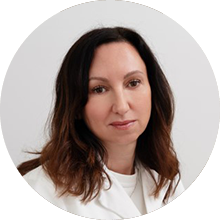
Acupuncture and Dry
Needling Specialist
Acupuncture and Dry Needling Specialist Tatyana Kapustina holds a Master’s degree in Acupuncture from the Pacific College of Oriental Medicine. Ms. Kapustina learned dry needling procedures from Dr. Jan Dommerholt, founder and CEO of Bethesda Physiocare, who was the first physical therapist in the United States to teach trigger point dry needling and injection techniques to health care providers.
Dr. Kalika and Ms. Kapustina both studied under Dr. Rostyslav Bubnov, a long-time research partner and a double board certified specialist in regional anaesthesia and pain management. Dr. Bubnov is a world-renowned pioneer in his approach to ultrasound guided dry needling
At NYDNRehab, we always begin with a conservative approach to plantar fasciitis treatment, but the secret to our success is precision. We have a 100% track record of success in treating plantar fasciitis, thanks to the combination of extracorporeal shockwave therapy (ESWT) and ultrasound guided dry needling (USDN).
A recent research publication in Nature cites Dr. Kalika’s own research, highlighting USDN as a top-tier evidence-based solution for plantar fasciopathy, and ranking it alongside ESWT and PRP as a primary intervention. To quote the article:
“Current therapeutic approaches for plantar fasciopathy include targeted mechanotherapy, optimized ESWT protocols, ultrasound-guided delivery of orthobiologics (e.g. leukocyte-rich PRP), and precision physical therapies. Furthermore, studies demonstrate the diagnostic and therapeutic value of ultrasound elastography and US-guided interventions for pain modulation. Ultrasound-guided dry needling of myofascial trigger points has been established as a primary intervention option for plantar fasciopathy.”
For patients, our multimodal approach to plantar fasciitis means quick pain relief, fast recovery, and longer-lasting outcomes. In our experience, combining modalities with precision guidance creates the best results.
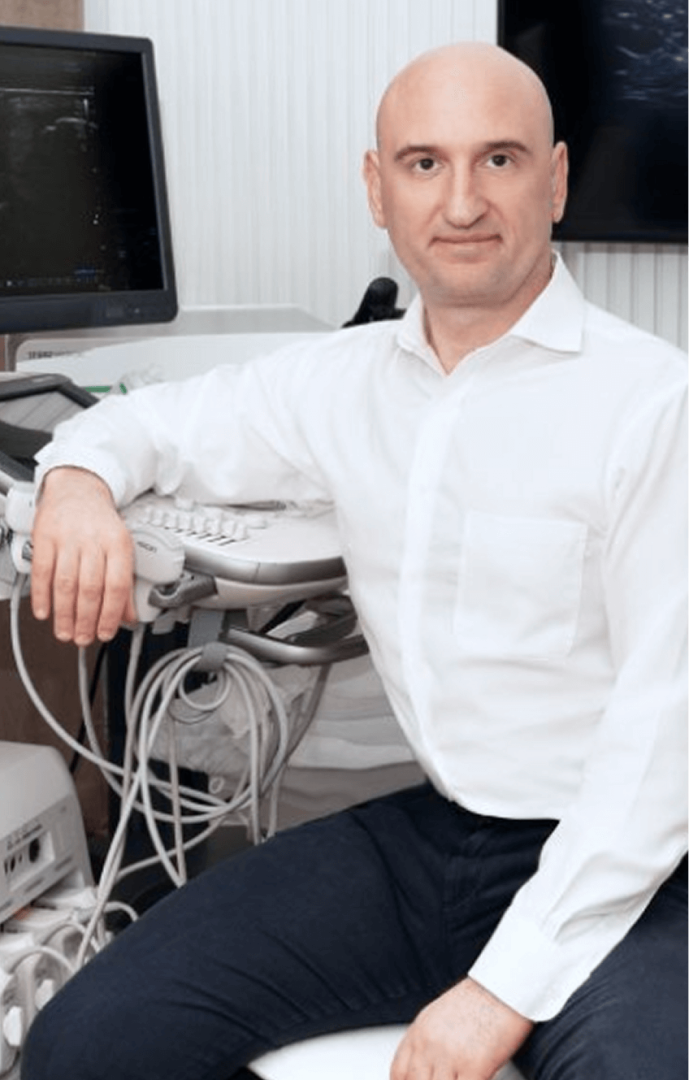
Many clinics advertise dry needling as a service, but most do not have the advantage of ultrasonography. While superficial trigger points can be identified and treated by palpation, deep tissue trigger points must be visualized in order to accurately treat them. At NYDNRehab, we leverage the highest-resolution ultrasound imaging to find and treat deep tissue trigger points.
High-resolution ultrasound has multiple advantages over regular ultrasound and other imaging modalities:
Our high-resolution Apollo unit has the highest resolution available in NYC, with capabilities for superb microvascular imaging (SMI) to detect early signs of healing, and sonoelastography to measure myofascial tissue stiffness. These tools are invaluable for tracking patient progress and confirming the effectiveness of treatment.
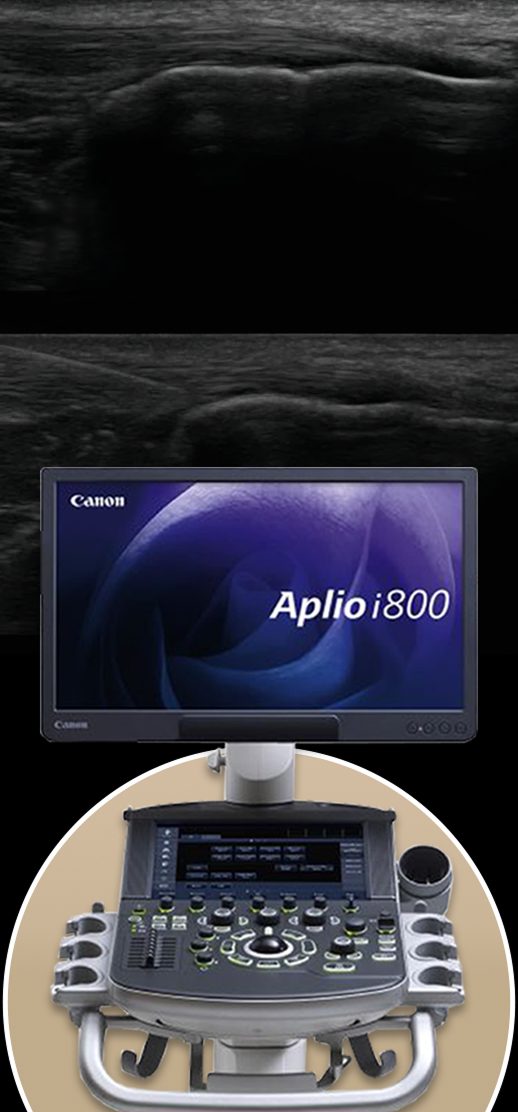
Biotensegrity describes an optimal state of internal tension, where muscles and fascia work together to guide and control movement, and to mediate outside forces. Biotensegrity is disrupted when myofascial tissues are damaged and lose their functional properties.
Fascia is a complex web of tough and elastic connective tissue that surrounds and connects muscles, engulfs the visceral organs, and holds the body’s structures in place during dynamic movement. Fascia plays a key role in joint stability. Fascia is made up of collagen fibers, lubricated by hyaluronic acid – a slippery gel-like substance able to attract 100X its mass in water.
Fascia promotes biotensegrity in multiple ways:
Damaged or dehydrated fascia can become dense and sticky, creating friction and impeding the ability of nerves and blood vessels to glide among other structures. Densified fascia undermines biotensegrity, disrupts muscle coordination patterns, reduces physical performance, and increases risk of injury.
During injury rehabilitation, it is not enough to heal muscles and connective tissues – fascial densifications and adhesions must be addressed in order to restore biotensegrity.
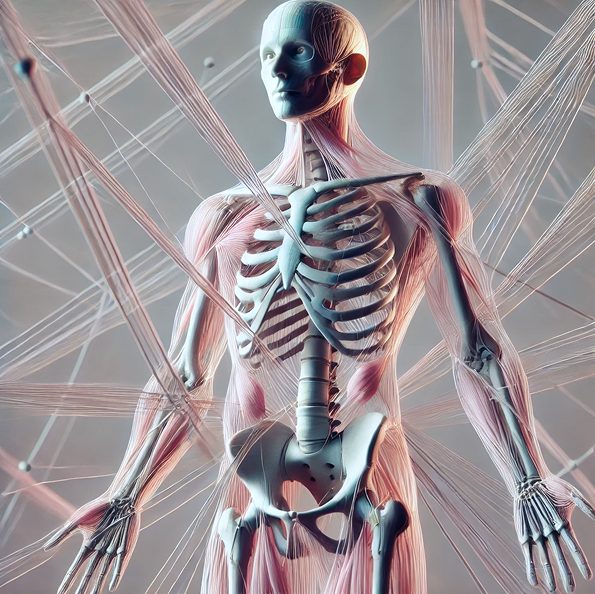
During injury rehabilitation, it is not enough to heal muscles and connective tissues – fascial densifications and adhesions must be addressed in order to restore biotensegrity.
At NYDNRehab, we use advanced interventions to restore biotensegrity:
Our fascia-first approach to injury rehab lays the groundwork for restoring biotensegrity, optimizing mobility, and enhancing physical performance.
During trigger point dry needling, a filament-thin needle is injected into an active trigger point to elicit a relaxation response. The procedure is called “dry” because no medication is injected by the needle. Trigger points are like mini muscle cramps that tend to appear where connective tissue meets nerves and muscle. The needle triggers a chemical response that releases the cramp, immediately eliminating pain and taking pressure off of surrounding tissues.
At NYDNRehab, we guide our dry needling procedure with high resolution ultrasound, enabling precise needle placement that directly penetrates the targeted trigger point. Without ultrasound guidance, dry needling can be a hit-or-miss proposition, sometimes missing the trigger point altogether.
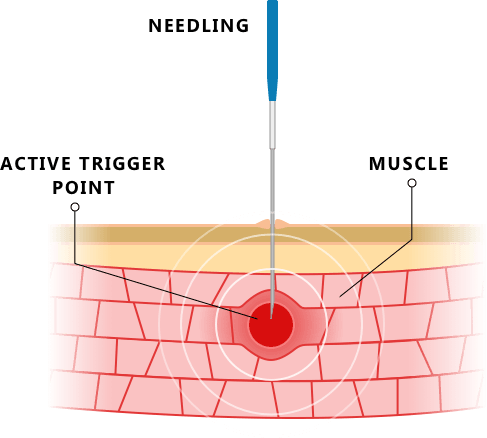
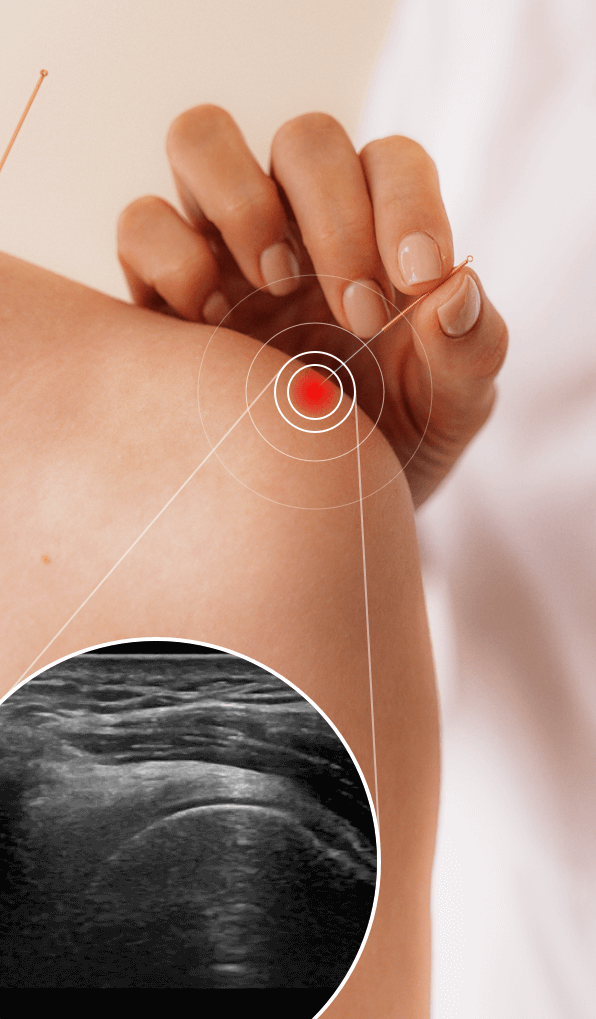
Ultrasound-guided dry needling is performed by two clinicians working together, one operating the ultrasound transducer while the other inserts the needles. Before beginning the procedure, a manual exam is conducted to map out the area where suspected trigger points are likely to be found.
Trigger points are typically found in regions with:
We use shear wave sonoelastography to visualize changes in tissue elasticity in the potential treatment zone. Once the zone has been identified, grey-scale high resolution ultrasonography is used to locate hidden trigger points. A needle is then inserted into the trigger point by the needling specialist, under ultrasound guidance.
After the needles are withdrawn, we use sonoelastography to check the location for changes in tissue density. We often augment dry needling with other methodologies, such as myofascial release, interfascial plane hydrodissection, PENS, orthobiologic injections, and focal shockwave therapy, to restore and optimize biotensegrity.


Unlike acupuncture, dry needling is based on in-depth knowledge of anatomy and physiology. When the needle penetrates a trigger point, it evokes a localized twitch response in myofascial fibers that releases the knot and restores normal function.
To treat densified fascia and fascial adhesions, multiple approaches have emerged in physical therapy, sports and fitness, such as foam rolling, myofascial massage, cupping, and other therapies aimed at releasing restrictions and alleviating pain. But while those techniques may provide some relief, they often fall short of fully restoring fascia’s functional properties.
Unlike other manual therapies, the Stecco technique of fascial manipulation is a highly systematic approach that requires specific training. When applied correctly, Stecco Fascial Manipulation not only restores tissue gliding – it reactivates sensory receptors within the fascia, helping the body to reorganize motor control, recalibrating the neuromuscular system and restoring efficient motor control.
Such reorganization occurs not only at the local (receptor and muscle) level, but throughout the entire nervous system, promoting more coordinated and efficient movement patterns. In addition, Stecco Fascial Manipulation influences the neurohumeral, paracrine, hormonal, and visceral-somatic systems, supporting global body regulation and recovery.
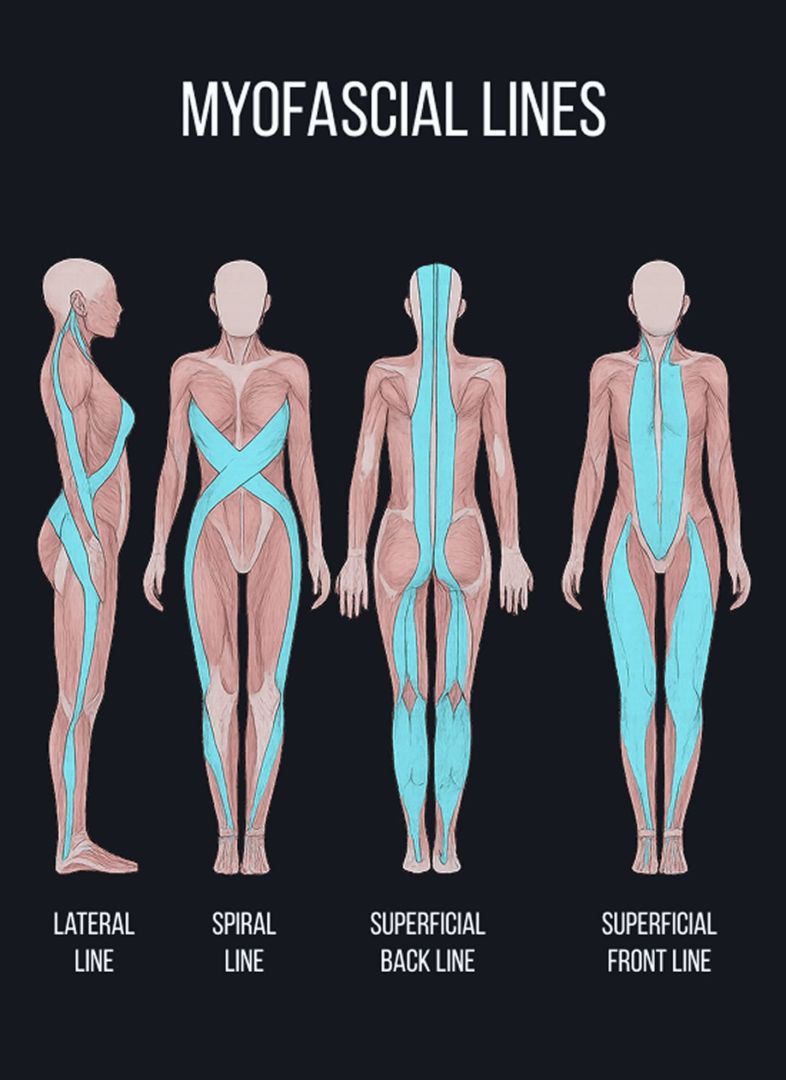
Progression of Stecco Fascial Manipulation involves:
These adaptations occur over the course of a week or two as tissue integrity and neural pathways are restored. This advanced methodology works to alleviate pain, eliminate restricted movement, enhance physical performance, and optimize whole-body mobility and stability. Dr. Kalika has received advanced training directly from Dr. Carla Stecco, creator of the Stecco Method and the world’s leading specialist in fascial science.
Dry needling is often included in the early stages of injury rehabilitation to relieve pain and stiffness, restore biotensegrity, and prepare the body’s tissues for physical therapy. But dry needling is not a stand-alone solution to myofascial pain. Beware of practitioners who only address trigger points without treating fascial densifications, nerve entrapments, and other factors that undermine biotensegrity.
Your personalized treatment plan may include a combination of therapeutic approaches, including:
At NYDNRehab, we treat the whole patient, not just your symptoms. Our personalized and holistic approach to myofascial pain ensures that you get the most comprehensive treatment available, to fully restore pain-free functional mobility.
Over the past decade, Dr. Kalika has made significant contributions to the body of scientific research on the efficacy of dry needling for treating a broad range of musculoskeletal conditions.
Recent research publications include:
You can gain access to more of Dr. Kalika’s research by following this link.
Trigger points are fairly common among athletic and physically active populations due to repetitive overload of the myofascial system. For active adults, trigger points may be unavoidable, but they often self-resolve over time. Most athletic injuries involve multiple tissue types, and trigger point dry needling may be an important step in the injury rehab process.
In less active people, trigger points can develop from muscle weakness or tightness, poor posture, repetitive overuse, and excessive sitting. Obesity and metabolic disorders can increase your risk of developing myofascial trigger points. Poor nutrition and chronic dehydration can degrade the quality of muscle and fascia tissue and increase your risk of myofascial pain.
Follow these tips to avoid trigger points and myofascial pain:

Dry needling supports the treatment of a broad range of musculoskeletal conditions, including:
Ultrasound imaging dramatically enhances the dry needling procedure and outcomes:
Ultrasound-guided dry needling is generally low-risk when performed by a trained and experienced clinician. Side effects are rare, but may include:

Myofascial pain specialist in Manhattan Dr. Lev Kalika has been working to revolutionize physical medicine, rehabilitation, sports medicine and athletic performance since 1998. Having conducted multiple research studies in ultrasound guided dry needling, and contributing his expertise to multiple publications, Dr. Kalika is considered an international expert in integrative rehabilitation, sports medicine, injury prevention, athletic performance, and ultrasound guided dry needling. NYDNRehab is considered the most technologically advanced private clinic in the US. The clinic features a range of technologies available only in the world’s top research labs, making them available for patient care, not just research.
 Dr. Yuri Brosgol
MD
Dr. Yuri Brosgol
MD
 Dr. Michael Goynatsky
DPT
Dr. Michael Goynatsky
DPT
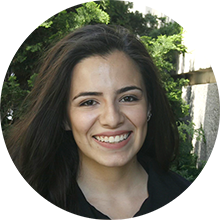 Dr. Daniela Escudero
DPT
Dr. Daniela Escudero
DPT
 Dr. Michelle Agyakwah
DC
Dr. Michelle Agyakwah
DC
 Dr. Tatyana Kapustina
L. Ac.
Dr. Tatyana Kapustina
L. Ac.

Ultrasound guided dry needling is an extremely effective evidence-based approach for treating myofascial pain caused by trigger points that rarely requires more then three treatments! Dry needling is perfectly safe and effective when performed under ultrasound guidance. During ultrasound guided dry needling (UGDN), painful trigger points are detected in deep layers of soft tissue using non-invasive high resolution ultrasonography. Once located, the clinician inserts a thin needle into the tissue, guiding it to the exact location of the trigger point. Once the needle penetrates the trigger point, it elicits a twitch response in the tight knotted tissue, causing it to relax and relieving pain. Dry needling is nearly painless, and the needles are “dry,” meaning they do not deliver medication to the site of the trigger point. While trigger point therapy can be performed without ultrasound guidance, it is a hit-or-miss procedure when trigger points are located in deep tissues and cannot be palpated through the skin. With ultrasound guidance, the dry needling procedure is quick and effective, since ultrasound imaging allows the clinician to precisely target each trigger point. Dry needling is legal in NYC.
Dr. Kalika is currently a certified member of:
American Institute of Ultrasound Medicine

Active member of ISMST
International Society of Extra Corporeal Shockwave Therapy
Active member of GCMAS
Gait and Clinical Movement Analysis Society
Active member of NASS
North American Spine Society
Active member of IADMS
International Association of Dance Medicine and Science
Active member of Virtual Rehabilitation Society
Active member of ASRA
American Society of Regional Anesthesia and Pain Medicine
American Academy
Association of Orthopedic Medicine
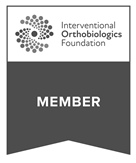
Active member of Interventional Orthobiologics Foundation